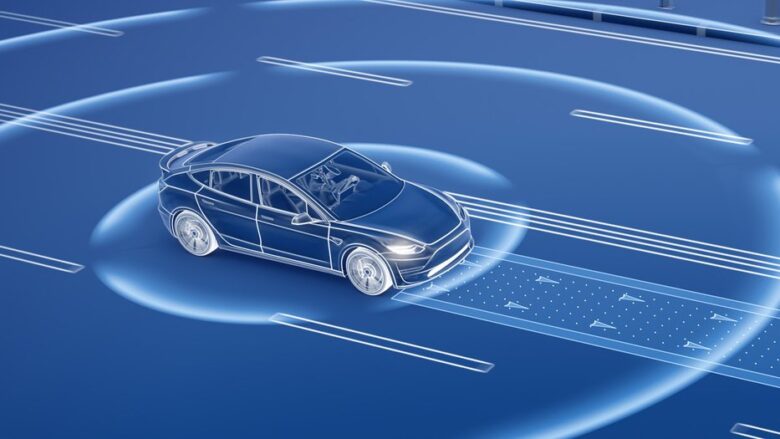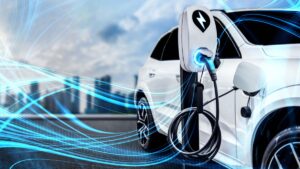Self-driving cars, or autonomous vehicles, are changing transportation in ways that were once science fiction. These autonomous vehicles will change the way we travel, commute, and interact with our environment. This article discusses how self-driving cars are changing transportation and what the future holds.
1. The Rise of Self-Driving Cars:
Technological advances and the desire to improve road safety, efficiency, and convenience have spurred the development of autonomous vehicles. Early prototypes of self-driving cars included cruise control and lane-keeping. Over time, these technologies have evolved into autonomous systems.
A complex array of sensors, cameras, radar, and lidar technologies power autonomous vehicles. These components create an accurate map of the vehicle’s surroundings, allowing it to recognize and respond to road conditions, obstacles, and other vehicles. Advanced algorithms and machine learning models analyze this data in real time to make driving decisions and safely manage traffic.
2. Improved Safety and Fewer Accidents:
The ability to improve road safety is a major advantage of autonomous vehicles. Human error causes most traffic accidents due to distraction, drowsiness, and poor driving. Instead of using human judgment, self-driving cars use technology to eliminate these dangers.
These cars have many features to prevent accidents. They identify and respond to threats faster than human drivers. Autonomous systems can also communicate with other vehicles and infrastructure to prevent collisions and make roads safer for everyone.
3. Increased Efficiency and Less Traffic:
Self-driving cars should increase traffic efficiency and minimize traffic flow. Self-driving cars can reduce travel problems in cities by optimizing driving patterns and traffic flow.
Autonomous vehicles can coordinate movements to reduce traffic bottlenecks. They can adjust speeds and routes based on real-time traffic data to reduce delays and shorten travel times. Self-driving cars can also reduce traffic congestion by driving in platoons.
4. Increased Mobility and Accessibility:
Self-driving cars can improve the mobility of people who have difficulty driving, such as seniors, people with disabilities, and non-drivers. Autonomous vehicles can help these people remain independent and access important services by providing reliable and convenient transportation.
Autonomous ride-sharing systems can provide on-demand transportation without a driver. This can help people with limited mobility reach medical appointments, social events, and other important places. Increasing travel options can also help fill gaps in public transportation, especially in underserved areas.
5. Economic Impact and Unemployment:
The widespread use of autonomous vehicles will have both positive and negative economic impacts. The development and deployment of autonomous driving technology opens up new economic opportunities and areas. Research, development, and manufacturing companies for self-driving vehicles continue to grow, creating new employment opportunities.
Self-driving cars have also raised concerns about job losses in specific industries. As self-driving cars become more common, truck drivers, taxi drivers, and delivery drivers could face challenges. These issues require proactive planning and support for affected personnel, including retraining and reskilling.
6. Legal and Ethical Issues:
As self-driving cars become more common, legal and ethical questions arise. When determining liability in a self-driving accident, the technology of the vehicle and the behavior of other road users must be taken into account.
Decision-making algorithms for self-driving cars raise ethical questions. How should self-driving cars prioritize the safety of occupants over pedestrians in dangerous situations? Ethics standards for autonomous vehicle technology are being developed and studied.
Conclusion:
Autonomous vehicles are transforming transportation by improving safety, efficiency, and accessibility. Despite the obstacles, self-driving technology has enormous potential. The development and integration of autonomous vehicles will shape the future of transportation.
FAQs:
1. What is a self-driving car?
Self-driving cars and other autonomous vehicles have the technology to drive and travel without human assistance. They use sensors, cameras, radar, and complex algorithms to understand their surroundings, decide how to drive, and control the car’s movements.
2. How will self-driving cars make roads safer?
Self-driving cars can make roads safer by eliminating human error, such as distracted, fatigued, or impaired driving. They use high-tech sensors and algorithms to detect and respond to potential hazards faster than human drivers, reducing the chance of a collision. Self-driving cars can also communicate with each other and the infrastructure to prevent accidents and navigate complex traffic situations with ease.
3. What are the benefits of autonomous vehicles in controlling traffic?
Self-driving cars can ease traffic congestion by figuring out the best way to drive and improving traffic conditions. They can talk to each other to plan actions, make changes based on current traffic conditions, and reduce the likelihood of traffic jams. In addition, self-driving cars can drive in smaller groups, called platoons, which makes better use of available space on the road and further reduces traffic.
4. How will self-driving cars change transportation and mobility?
Self-driving cars make it easier for people who have difficulty driving, such as the elderly and disabled, to travel and get where they need to go. Autonomous vehicles offer these people a safe way to travel, allowing them to remain independent and access essential services. Self-driving ride-sharing services can also provide on-demand transportation without the need for human drivers. This is useful for people who do not have access to regular public transportation.
5. What impact will self-driving cars have on the economy?
The rise of self-driving cars has significant economic implications. On the positive side, it opens up new business opportunities and industries related to autonomous driving technology, such as manufacturing, R&D, and sales. But it also raises concerns about job losses in sectors such as trucking, taxis and delivery services. To address these issues, retraining and reskilling programs are needed to help affected workers.




